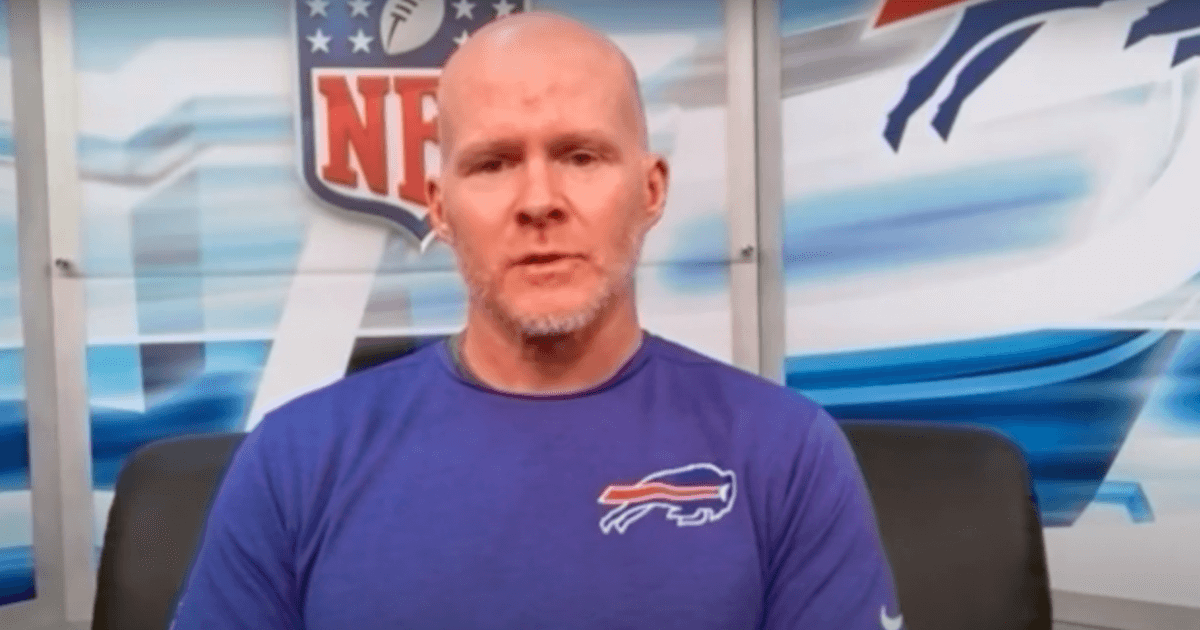NFL Coach Urges Sun Protection
- Buffalo Bills head coach Sean McDermott has teamed up with the Skin Cancer Foundation to encourage men to start using sunscreen to avoid skin cancer.
- He pays tribute to “one of my biggest mentors in the NFL,” Jim Johnson, the legendary defensive coordinator for the Philadelphia Eagles with whom he was incredibly close until Johnson’s death at the age of 68 in 2009 from melanoma.
- Some people are at higher risk of skin cancer than others. If you are fair-skinned, have blond hair and blue eyes, a family history of skin cancer and/or have many moles all over your body, you are at higher risk.
Sean McDermott has teamed up with the Skin Cancer Foundation to make a video that encourages men to start using protection when they head outdoors and pays tribute to his friend Jim Johnson.
Read More"To see a man struck down in such a short amount of time by skin cancer sent a message to me that, ‘hey I better pay attention,'” explains McDermott. "This guy I looked up to, a guy who was so strong and seemingly invincible in my eyes, it made this skin cancer message real.”
He was particularly concerned for his children, who have fair skin that is much more susceptible to sun damage.
"We talk a lot about sun protection, and they see what I wear. I think that sends a message,” notes McDermott. “I believe that educating our children and educating adults is highly important."
He then went through his own routine for staying safe while spending long days out in the sun at training camp.
First up: sunscreen.
"I know I certainly don't enjoy wearing sunscreen. It was a constant tug of war for me, especially when I was a kid,” says McDermott. “But I came to learn that it's very important.”
He reveals that he learned that lesson the hard way. “There were times when I didn't wear sunblock,” says McDermott. “So I'm seeing both sides of it right now, dealing with different forms of skin cancer that have come up, squamous cell or basal cell carcinomas."
Next up is sun-protective clothing like long-sleeve shirts and pants – even in the summer.
"There are times when it's hot that I'd like to be out there in the yard with no shirt and no hat," states McDermott. "Sometimes it doesn't look great, but sun protection is very important."
Last, but certainly not least, is self-checks.
"I think it's important on a daily basis that you check your skin visually, what you can see from the arms or chest, to your legs, and sometimes even in between your toes. In particular, look at the parts that are exposed to sun the arms, neck, face and head," notes McDermott.
And for really hard to see places, use a phone.
"I use my phone to take pictures and then send them to my dermatologist. If you see anything new, changing or unusual, go get checked," urges McDermott.
"It is a pain in the butt to go to the dermatologist or any doctor for that matter but I go because I want to raise my kids, I go because I want to retire one day, enjoy life and know that I've taken care of my body. And a big piece of that is taking care of my skin."
How To Check For Skin Cancer And Melanoma
Doing regular self-checks on your skin is important to find skin cancer early. If you're high-risk, it’s especially vital. Dr. Cecilia Larocca, a dermatologist at Dana-Farber Cancer Institute, recommends looking at your skin once a month for anything suspiciousand using the acronym ABCDE as a checklist:
Asymmetrical moles: If you drew a line straight down the center of the mole, would the sides match?
Borders: Irregular, jagged, not smooth; can also stand for bleeding
Colors: Multiple distinct colors in the mole
Diameter: Larger than 6mm, about the size of a pencil head eraser
Evolution: This may be the most important, anything that is changing over time such as gaining color, losing color, painful, itching, hurting, changing shape.
Who Is A High Risk For Skin Cancer
There are a variety of different hereditary risk factors that can determine your risk of skin cancer, and some people are at a higher risk than others.
Some people are more at risk for melanoma than others. If you are fair-skinned, have blond hair and blue eyes, a family history of skin cancer and/or have many moles all over your body, you are at higher risk than most. If any of this applies to you, it's even more important that you see your dermatologist regularly as well as do your own skin checks. It can help you determine your risk level so you can take measures to reduce your non-hereditary risk.
Learn more about SurvivorNet's rigorous medical review process.


